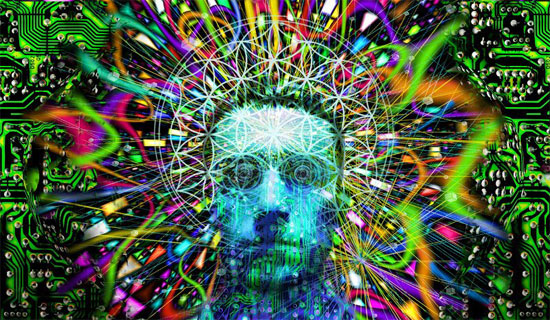Digital Self: A Third Type of Self-Representation
By Richard Kensinger
The sense of mind and self is created by multiple social interactions with many others; particularly from those in our early psychosocial environment. These intimate interactions result in the construction of our personality.

Personality becomes, in time, the consistent features of who we are in regards to our thoughts, feelings, and actions (which I refer to as mind, mood, and motor). Around age 3, personality emerges. It is dynamically formed by multiple inputs from others, becomes consolidated in our late teens and early 20’s, and around the 3rd decade it becomes relatively fixed.
In Psychology, one field of thought involves the split-object representations of self/other. There are essentially four global sub-types and each involves a global emotional charge. They are: good-good (++), good-bad (+–), bad-good (–+), and bad-bad (––). These four subtypes, in my clinical opinion, are critical to attachment and bonding.
Emotions essentially encode our experiences with others. This occurs in the Limbic region of the brain. I refer to this region as our “reacting brain” as it is the origin of our emotions, motivations and attraction to and connections to others. (See Daniel J. Siegel’s The Developing Mind.)
In Psychology, we identify four attachment subtypes: secure, insecure-avoidant, insecure-ambivalent, disorganized; and based on my clinical experience, I add a fifth, rage-aggressive. Sociology indicates that we exhibit a private-self and a public-self (also referred to as back-stage and front-stage persona’s).
As a clinician I am very interested in the degrees of concordance or discordance among these self-representations. Now in the digital age, I add the concept of the digital-self, and expound on this further in this article.
Our self-concept consists of three dimensions: physicality (our physical presentation in the social world), self-esteem (the degree we value ourselves), and self-efficacy (degree of competence and confidence). Abraham Maslow and others in the Humanistic paradigm, discuss our natural movement towards our optimal self which Maslow refers to as a state of “self-actualization”. I refer to this as the optimal self, essentially becoming the best person we can be.
Based on my clinical observations over four decades, I identify three global personality orientations: prosocial, asocial and antisocial. (Here, I am not outlining the various types of disordered personalities. I have this detailed in other published articles.)
The vast majority of us care about what others think of us. Sociology refers to this as impression management. Most of us are inclined to have others perceive us in a positive light. We seek validation from others. Within his needs hierarchy, Maslow refers to the essential needs for recognition and approval. This also is confirmed by my observations that we want others to see us in the most positive way. In regards to the digital self, we now have an opportunity to amplify our positive traits, especially if we regard ourselves as really not prosocial and are concerned with rejection.

Platforms such as Facebook allow us to stay connected to important others and actually many others. We also keep tally of “likes” and “dislikes” and anticipate much more of the former.
I do not post on any social platforms at all. I offer clinical observations and articles on professional sites. It is curious to me that on a few of the professional platforms, a few commentators can actually be quite critical of commentators and authors, and attack them personally. I suspect this occurs on platforms such as Twitter, as I’ve been told. On the five professional sites in which I participate, the vast majority of posters are polite and respectful. Some are quite passionate in their views. A small minority display aggression and attack others relentlessly.
My wife does post on Facebook. She informs me that more than a few folks appear to “brag” about their lives, and some display the thousands of “friends” and “followers” they have. She indicates to me that their lives are much more exciting than our own.
Is this indeed the case? Or are some of these folks overcompensating? According to communications experts, this is a growing phenomenon of transforming themselves from the ordinary to celebrity.
On a more critical note, I have devoted my entire professional life to healthcare, particularly behavioral healthcare (BHC). I am becoming more alarmed about reducing our client/patients to mere carbon, monetary and digital units.
To summarize, the digital world is a virtual world where we can more readily alter the presentation of the self. We can move from factual to fantasy more readily and easily when we are so inclined. In the process, we may be unintentionally dehumanizing one another.
yogaesoteric
April 12, 2019
